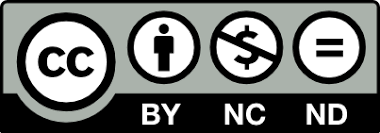The Art of Manipulation: Exploring Gaslighting in James Thurber’s Narratives
DOI:
https://doi.org/10.55804/jtsu2346-8149.2025.09.11Keywords:
gaslighting, language order, manipulation, speech act theoryAbstract
Gaslighting, a form of psychological manipulation, represents a complex discourse with significant linguistic dimensions. Despite its relevance, it has received relatively little attention in linguistic research. This paper investigates the linguistic manifestations of gaslighting in James Thurber’s works, drawing on excerpts from The Unicorn in the Garden (1939), The Little Girl and the Wolf (1939), and The Great Quillow (1944).
The theoretical framework integrates speech act theory (Austin, 1961; Searle, 1979), the theory of the linguistic order of gaslighting (Catapang Podoski, 2020), and approaches from linguo-stylistics and discourse analysis (Lakoff & Johnson, 1981; Verdonk, 2002). The analysis demonstrates that gaslighting in Thurber’s stories is primarily enacted through explicit assertive speech acts. These assertives satisfy both preparatory and sincerity conditions, enabling the speaker to achieve the intended perlocutionary effect on the listener.
In Thurber’s narratives, gaslighting is shown to operate predominantly as first-order gaslighting: it does not overtly negate the victim’s perception of reality. Still, it subtly reshapes it to the manipulator’s advantage. Moreover, stylistic devices such as epithets, similes, and metaphors enhance the linguistic construction of gaslighting, reinforcing manipulation strategies and rendering them more covert and insidious.
This study provides insights into how language functions as a tool of manipulation and control, offering implications for literary analysis and the understanding of real-world communicative practices.
References
Anderson, J. R. (2010). Cognitive psychology and its implications. Worth Publishers.
Austin, J. L. (2020). How to do things with words. Barakaldo Books.
Bateson, G., Jackson, D. D., Haley, J., & Weakland, J. (1956). Toward a theory of schizophrenia. Behavioural
Science, 1, 251–264.
Birch, A. (2015). 30 covert emotional manipulation tactics: How manipulators take control in personal
relationships. CreateSpace Independent Publishing Platform.
Catapang Podosky, P.-M. (2021). Gaslighting, First- and Second-Order. Hypatia, 36(1), 207–227.
Croft, W., & Cruse, A. (2004). Cognitive linguistics. Cambridge University Press.
Felipe Barrero, A. (2023). J.L. Austin and John Searle on speech act theory. The Collector.
https://www.thecollector.com/speech-act-theory-austin-and-searle/. Retrieved on March 13, 2025.
Gillis, K. (2023). Unintentional gaslighting: What it is, examples, & how to respond. Choosing Therapy. Retrieved on
March 5, 2025, from https://www.choosingtherapy.com/unintentional-gaslighting
Greenwood, J. D. (1999). Understanding the 'cognitive revolution' in psychology. Journal of the History of the
Behavioural Sciences, 35(1), 1–22.
Haupt, A. (2022, April 15). How to recognise gaslighting and respond to it. The Washington Post. Retrieved February
, 2025.
Holland, M. (2023). Narcissistic triangulation: Definition, examples, & how to respond. Choosing Therapy. Retrieved
on March 24, 2025, from https://www.choosingtherapy.com/narcissistic-triangulation
Huang, Y. (2014). Pragmatics (2nd ed.). Oxford University Press.
Lakoff, G., & Johnson, M. (1981). Metaphors we live by. University of Chicago Press.
Meland, A.T. (2020). Challenging gender stereotypes through a transformation of a fairy tale. European Early
Childhood Education Research Journal, 28, 911 - 922.
Nordquist, R. (2020). Speech act theory. ThoughtCo. Retrieved on March 17, 2025, from https://www.thoughtco.
com/speech-act-theory-1691986
Purtseladze, V. (2024a). Language and manipulation: Exploring gaslighting via speech act theory. Online Journal of
Humanities ETAGTSU, (9), Pages 16.
Purtseladze, V. (2024b). Stigma-Gaslighting Semantics: Language, Manipulation and Cultural Stereotypes in Georgia.
Georgian Psychological Journal, Vol.6, Issue 1, 192-199.
Searle, J. (1975). Indirect speech acts. In P. Cole & J. L. Morgan (Eds.), Syntax and semantics, vol. 3 (pp. 59–82).
Academic Press.
Searle, J. (1979). Expression and meaning. Cambridge University Press.
Searle, J. (2010). Making the social world. Oxford University Press.Skinner, B. F. (1951). How to teach animals.
Freeman.
Spear, A. D. (2023). Epistemic dimensions of gaslighting: Peer-disagreement, self-trust, and epistemic injustice.
Inquiry, 66(1), 68–91.
Temple, C. M. (1990). Developments and applications of cognitive neuropsychology. In M. W. Eysenck (Ed.),
Cognitive psychology: An international review (pp. 110). John Wiley & Sons Ltd.
Vanderveken, D., & Susumu, K. (2021). Introduction. In Essays in speech act theory (pp. 1–21). John Benjamins.
Verdonk, P. (2002). Stylistics. Oxford University Press.
Wilson, V. (2024). Unconscious gaslighting: What is it and how to manage it. Exceptional Futures. Retrieved on March
, 2025, from https://www.exceptionalfutures.com/unconscious-gaslighting
Sources of Empirical Data:
Thurber, J. (1944) The Great Quillow. Retreaved on March 23, 2025.
https://vidyaonline.org/dl/quillow.pdf
Thurber, J. (1939) The Unicorn in the Garden. Retreaved on March 23, 2025.
https://8mms.weebly.com/uploads/7/9/7/8/7978335/unicorn_in_the_garden.pdf
Thurber, J. (1939) The Little Girl and the Wolf . Retreaved on March 23, 2025.
Downloads
Published
How to Cite
Issue
Section
License
Copyright (c) 2025 Authors Retain All Rights. Online Journal of Humanities ETAGTSU Has Only the Right of the First Publication.

This work is licensed under a Creative Commons Attribution-NonCommercial-NoDerivatives 4.0 International License.












